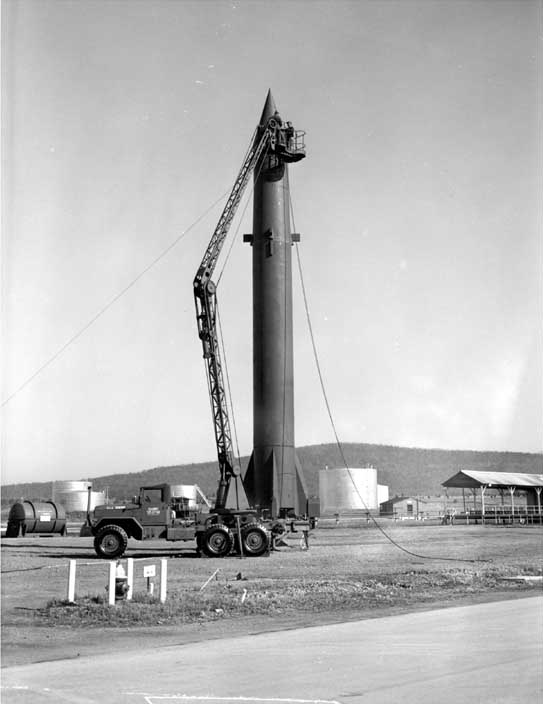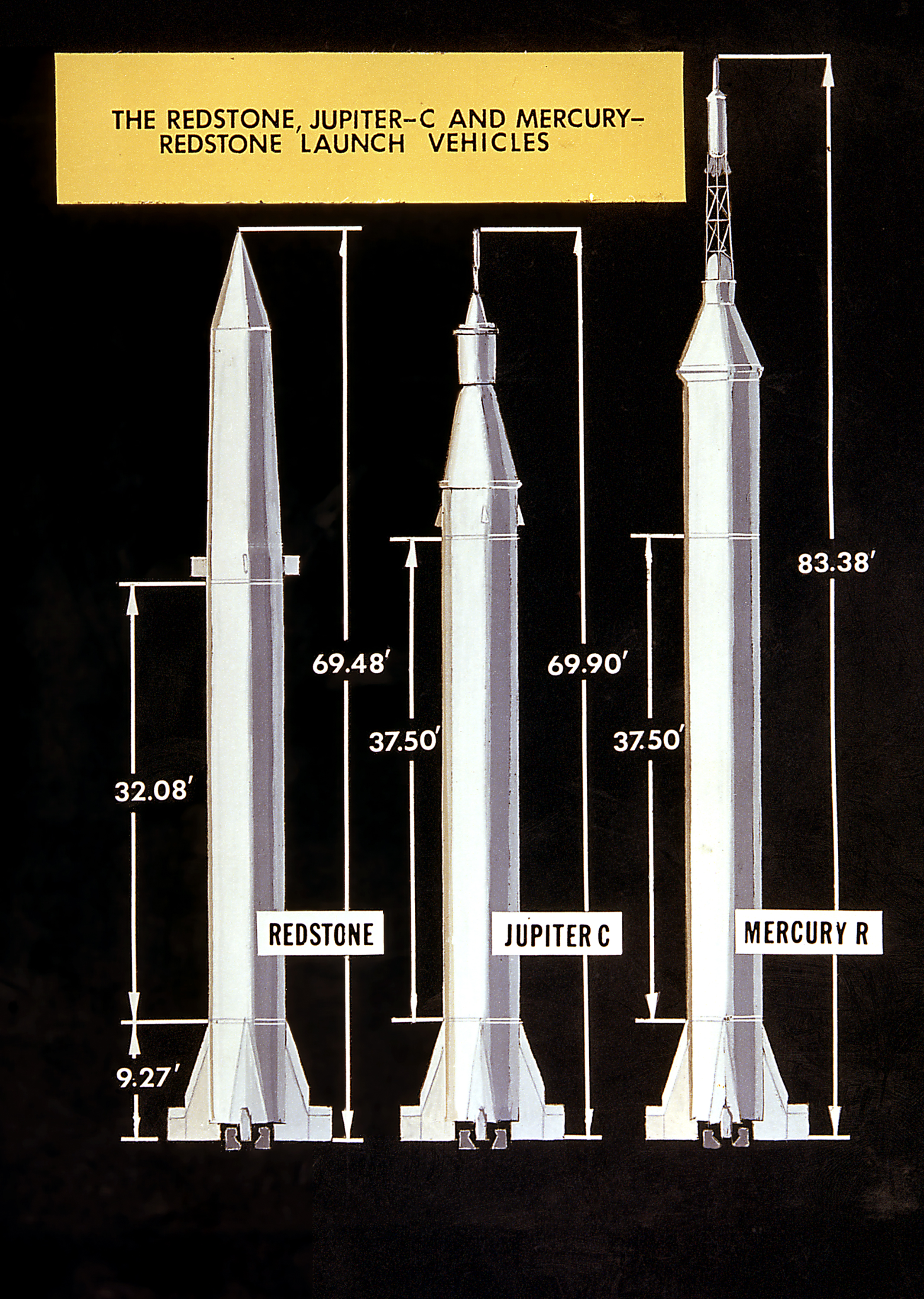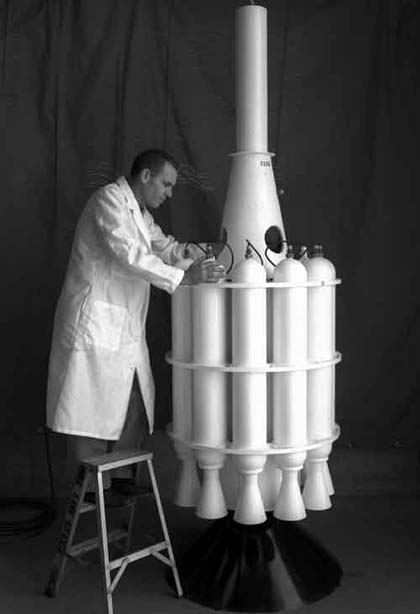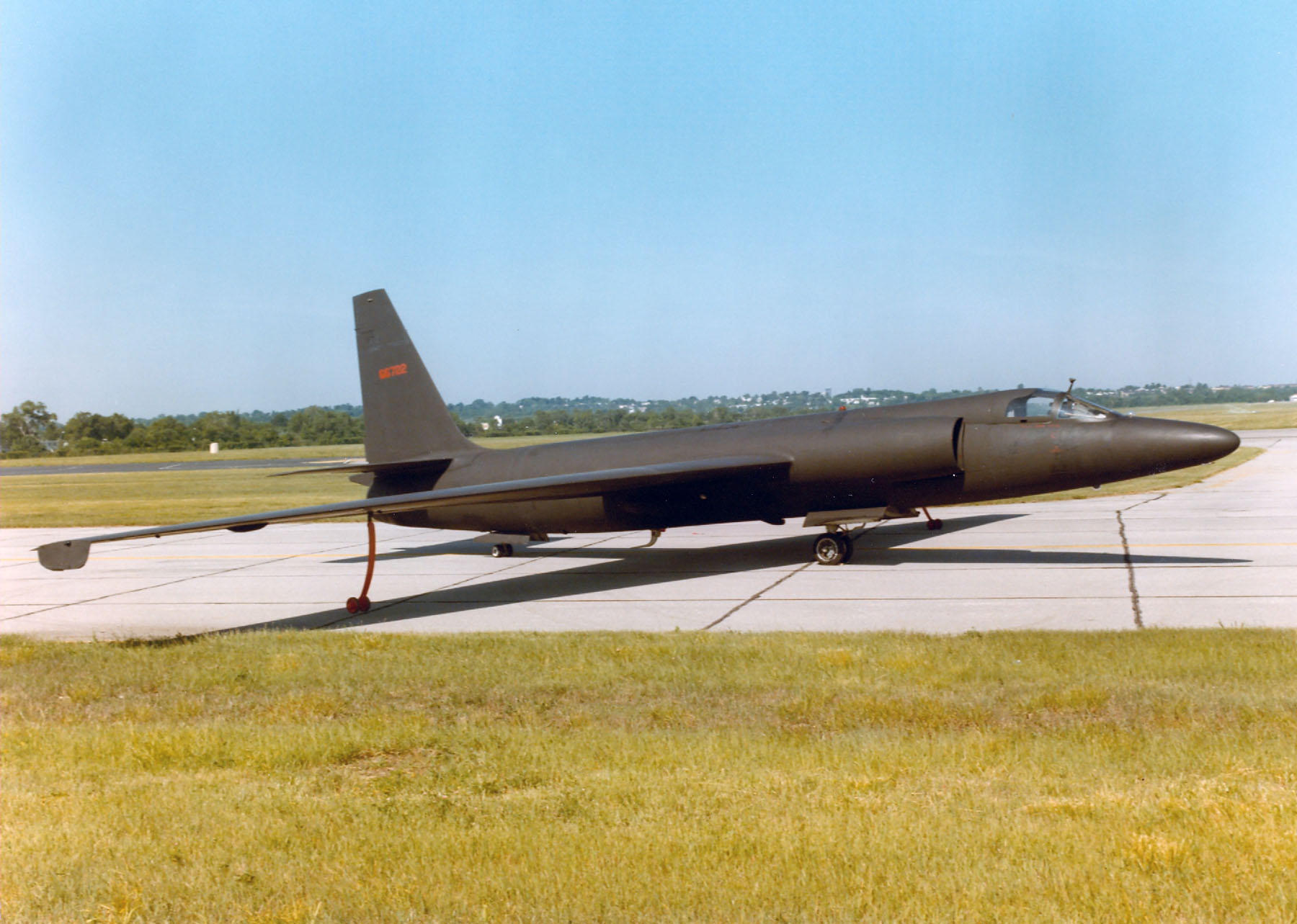|
Jupiter-A
The Redstone family of rockets consisted of a number of American ballistic missiles, sounding rockets and expendable launch vehicles operational during the 1950s and 1960s. The first member of the Redstone family was the PGM-11 Redstone missile, from which all subsequent variations of the Redstone were derived. The Juno 1 version of the Redstone launched Explorer 1, the first U.S. orbital satellite in 1958 and the Mercury-Redstone variation carried the first two U.S. astronauts into space in 1961. The rocket was named for the Redstone Arsenal in Huntsville, Alabama where it was developed. PGM-11 Redstone First launched in 1953, the PGM-11 Redstone was a short-range surface-to-surface ballistic missile in active service with the U.S. Army from June 1958 to June 1964; and was used for the first U.S. live nuclear missile tests. It was built by Chrysler for the United States Army Ballistic Missile Agency (ABMA) and was deployed in West Germany. George Huebner was the executive engin ... [...More Info...] [...Related Items...] OR: [Wikipedia] [Google] [Baidu] |
Army Ballistic Missile Agency
The Army Ballistic Missile Agency (ABMA) was formed to develop the United States Army, U.S. Army's first large ballistic missile. The agency was established at Redstone Arsenal on 1 February 1956, and commanded by Major General John Bruce Medaris, John B. Medaris with Wernher von Braun as technical director. History The Redstone (rocket), Redstone missile was the first major project assigned to ABMA. The Redstone was a direct descendant of the V-2 missile developed by the von Braun team in Germany during World War II. After the Naval Research Laboratory's Project Vanguard was chosen by the United States Department of Defense, DoD Committee on Special Capabilities, over the ABMA's proposal to use a modified Redstone (rocket), Redstone ballistic missile as a satellite launch vehicle, ABMA was ordered to stop work on launchers for satellites and focus, instead, on military missiles. Von Braun continued work on the design for what became the Jupiter-C rocket. This was a three-st ... [...More Info...] [...Related Items...] OR: [Wikipedia] [Google] [Baidu] |
Jupiter-C Vs Jupiter IRBM
The Jupiter-C was an American research and development vehicle developed from the Jupiter-A. Jupiter-C was used for three unmanned sub-orbital spaceflights in 1956 and 1957 to test re-entry nosecones that were later to be deployed on the more advanced PGM-19 Jupiter mobile missile. The recovered nosecone was displayed in the Oval Office as part of President Dwight D. Eisenhower's televised speech on November 7, 1957. A member of the Redstone rocket family, Jupiter-C was designed by the U.S. Army Ballistic Missile Agency (ABMA), under the direction of Wernher von Braun. Three Jupiter-C flights were made followed by three satellite launches (Juno I). All were launched from Cape Canaveral, Florida. Description Each vehicle consisted of a modified Redstone ballistic missile with two solid-propellant upper stages. The tanks of the Redstone were lengthened by 8 ft (2.4 m) to provide additional propellant. The instrument compartment was also smaller and lighter than the Reds ... [...More Info...] [...Related Items...] OR: [Wikipedia] [Google] [Baidu] |
Jupiter-C
The Jupiter-C was an American research and development vehicle developed from the Jupiter-A. Jupiter-C was used for three unmanned sub-orbital spaceflights in 1956 and 1957 to test re-entry nosecones that were later to be deployed on the more advanced PGM-19 Jupiter mobile missile. The recovered nosecone was displayed in the Oval Office as part of President Dwight D. Eisenhower's televised speech on November 7, 1957. A member of the Redstone rocket family, Jupiter-C was designed by the U.S. Army Ballistic Missile Agency (ABMA), under the direction of Wernher von Braun. Three Jupiter-C flights were made followed by three satellite launches (Juno I). All were launched from Cape Canaveral, Florida. Description Each vehicle consisted of a modified Redstone ballistic missile with two solid-propellant upper stages. The tanks of the Redstone were lengthened by 8 ft (2.4 m) to provide additional propellant. The instrument compartment was also smaller and lighter than the Reds ... [...More Info...] [...Related Items...] OR: [Wikipedia] [Google] [Baidu] |
PGM-19 Jupiter
The PGM-19 Jupiter was the first nuclear armed, medium-range ballistic missile (MRBM) of the United States Air Force (USAF). It was a liquid-propellant rocket using RP-1 fuel and LOX oxidizer, with a single Rocketdyne LR79-NA (model S-3D) rocket engine producing of thrust. It was armed with the W49 nuclear warhead. The prime contractor was the Chrysler Corporation. The Jupiter was originally designed by the US Army, which was looking for a highly accurate missile designed to strike enemy states such as Communist China and USSR. The US Navy also expressed an interest in the design as an SLBM but left the collaboration to work on their Polaris. Jupiter retained the short, squat shape intended to fit in naval submarines. Development history Initial concept Jupiter traces its history ultimately to the PGM-11 Redstone missile, the US's first nuclear ballistic missile. While it was entering service, Wernher von Braun's Army Ballistic Missile Agency (ABMA) team at Redstone Ars ... [...More Info...] [...Related Items...] OR: [Wikipedia] [Google] [Baidu] |
Vanguard TV3
Vanguard TV-3 (also called Vanguard Test Vehicle-Three), was the first attempt of the United States to launch a satellite into orbit around the Earth, after the successful Soviet launches of Sputnik 1 and Sputnik 2. Vanguard TV-3 was a small satellite designed to test the launch capabilities of the three-stage Vanguard and study the effects of the environment on a satellite and its systems in Earth orbit. It was also to be used to obtain geodetic measurements through orbit analysis. Solar cells on Vanguard TV-3 were manufactured by Bell Laboratories. At its launch attempt on 6 December 1957, at Cape Canaveral Air Force Station, the booster ignited and began to rise, but about two seconds after liftoff, after rising about 1.2 m (four feet), the rocket lost thrust and fell back to the launch pad. As it settled, the fuel tanks ruptured and exploded, destroying the rocket and severely damaging the launch pad. The Vanguard 1A satellite was thrown clear and landed on the ground a sh ... [...More Info...] [...Related Items...] OR: [Wikipedia] [Google] [Baidu] |
Lockheed U-2
The Lockheed U-2, nicknamed "''Dragon Lady''", is an American single-jet engine, high altitude reconnaissance aircraft operated by the United States Air Force (USAF) and previously flown by the Central Intelligence Agency (CIA). It provides day and night, high-altitude (), all-weather intelligence gathering. Lockheed Corporation originally proposed it in 1953, it was approved in 1954, and its first test flight was in 1955. It was flown during the Cold War over the Soviet Union, China, Vietnam War, Vietnam, and Cuba. In 1960, Francis Gary Powers, Gary Powers was 1960 U-2 incident, shot down in a CIA U-2C over the Soviet Union by a surface-to-air missile (SAM). Major Rudolf Anderson, Rudolf Anderson Jr. was shot down in a U-2 during the Cuban Missile Crisis in 1962. U-2s have taken part in post-Cold War conflicts in War in Afghanistan (2001–2021), Afghanistan and Operation Iraqi Freedom, Iraq, and supported several multinational NATO operations. The U-2 has also been used for ... [...More Info...] [...Related Items...] OR: [Wikipedia] [Google] [Baidu] |
Vanguard (rocket)
The Vanguard rocket was intended to be the first launch vehicle the United States would use to place a satellite into orbit. Instead, the Sputnik crisis caused by the surprise launch of Sputnik 1 led the U.S., after the failure of Vanguard TV-3, to quickly orbit the Explorer 1 satellite using a Juno I rocket, making Vanguard 1 the second successful U.S. orbital launch. Vanguard rockets were used by Project Vanguard from 1957 to 1959. Of the eleven Vanguard rockets which the project attempted to launch, three successfully placed satellites into orbit. Vanguard rockets were an important part of the Space Race between the United States and the Soviet Union. Overview In 1955, the United States announced plans to put a scientific satellite in orbit for the International Geophysical Year (IGY) in 1957–1958. The goal was to track the satellite as it performed experiments. At that time, there were three candidates for the launch vehicle: The Air Force's SM-65 Atlas, a derivative ... [...More Info...] [...Related Items...] OR: [Wikipedia] [Google] [Baidu] |
Wernher Von Braun
Wernher Magnus Maximilian Freiherr von Braun ( , ; 23 March 191216 June 1977) was a German and American aerospace engineer and space architect. He was a member of the Nazi Party and Allgemeine SS, as well as the leading figure in the development of rocket technology in Nazi Germany and later a pioneer of rocket and space technology in the United States. As a young man, von Braun worked in Nazi Germany's rocket development program. He helped design and co-developed the V-2 rocket at Peenemünde during World War II. Following the war, he was secretly moved to the United States, along with about 1,600 other German scientists, engineers, and technicians, as part of Operation Paperclip. He worked for the United States Army on an intermediate-range ballistic missile program, and he developed the rockets that launched the United States' first space satellite Explorer 1 in 1958. He worked with Walt Disney on a series of films, which popularized the idea of human space travel in ... [...More Info...] [...Related Items...] OR: [Wikipedia] [Google] [Baidu] |
Sputnik Crisis
The Sputnik crisis was a period of public fear and anxiety in Western nations about the perceived technological gap between the United States and Soviet Union caused by the Soviets' launch of ''Sputnik 1'', the world's first artificial satellite. The crisis was a significant event in the Cold War that triggered the creation of NASA and the Space Race between the two superpowers. The satellite was launched on October 4, 1957, from the Baikonur Cosmodrome. This created a crisis reaction in national newspapers such as ''The New York Times'', which mentioned the satellite in 279 articles between October 6, 1957, and October 31, 1957 (more than 11 articles per day). Background In the early 1950s, Lockheed U-2 spy plane flights over the Soviet Union provided intelligence that the US held the advantage in nuclear capability. However, an education gap was identified when studies conducted between 1955 and 1961 reported that the Soviet Union was training two to three times as many sci ... [...More Info...] [...Related Items...] OR: [Wikipedia] [Google] [Baidu] |
Soviet Union
The Soviet Union,. officially the Union of Soviet Socialist Republics. (USSR),. was a transcontinental country that spanned much of Eurasia from 1922 to 1991. A flagship communist state, it was nominally a federal union of fifteen national republics; in practice, both its government and its economy were highly centralized until its final years. It was a one-party state governed by the Communist Party of the Soviet Union, with the city of Moscow serving as its capital as well as that of its largest and most populous republic: the Russian SFSR. Other major cities included Leningrad (Russian SFSR), Kiev (Ukrainian SSR), Minsk ( Byelorussian SSR), Tashkent (Uzbek SSR), Alma-Ata (Kazakh SSR), and Novosibirsk (Russian SFSR). It was the largest country in the world, covering over and spanning eleven time zones. The country's roots lay in the October Revolution of 1917, when the Bolsheviks, under the leadership of Vladimir Lenin, overthrew the Russian Provisional Government ... [...More Info...] [...Related Items...] OR: [Wikipedia] [Google] [Baidu] |
Mercury-Redstone Launch Vehicle
The Mercury-Redstone Launch Vehicle, designed for NASA's Project Mercury, was the first American crewed space booster. It was used for six sub-orbital Mercury flights from 1960–1961; culminating with the launch of the first, and 11 weeks later, the second American (and the second and third humans) in space. The four subsequent Mercury human spaceflights used the more powerful Atlas booster to enter low Earth orbit. A member of the Redstone rocket family, it was derived from the U.S. Army's Redstone ballistic missile and the first stage of the related Jupiter-C launch vehicle; but to human-rate it, the structure and systems were modified to improve safety and reliability. Modifications from the Redstone missile NASA chose the U.S. Army's Redstone liquid-fueled ballistic missile for its sub-orbital flights as it was the oldest one in the US fleet, having been active since 1953 and had many successful test flights.''The Mercury-Redstone Project'', p. 2-2, 3-1. The s ... [...More Info...] [...Related Items...] OR: [Wikipedia] [Google] [Baidu] |
Project Mercury
Project Mercury was the first human spaceflight program of the United States, running from 1958 through 1963. An early highlight of the Space Race, its goal was to put a man into Earth orbit and return him safely, ideally before the Soviet Union. Taken over from the US Air Force by the newly created civilian space agency NASA, it conducted 20 uncrewed developmental flights (some using animals), and six successful flights by astronauts. The program, which took its name from Roman mythology, cost $ (adjusted for inflation). The astronauts were collectively known as the "Mercury Seven", and each spacecraft was given a name ending with a "7" by its pilot. The Space Race began with the 1957 launch of the Soviet satellite Sputnik 1. This came as a shock to the American public, and led to the creation of NASA to expedite existing US space exploration efforts, and place most of them under civilian control. After the successful launch of the Explorer 1 satellite in 1958, crewed spacef ... [...More Info...] [...Related Items...] OR: [Wikipedia] [Google] [Baidu] |









